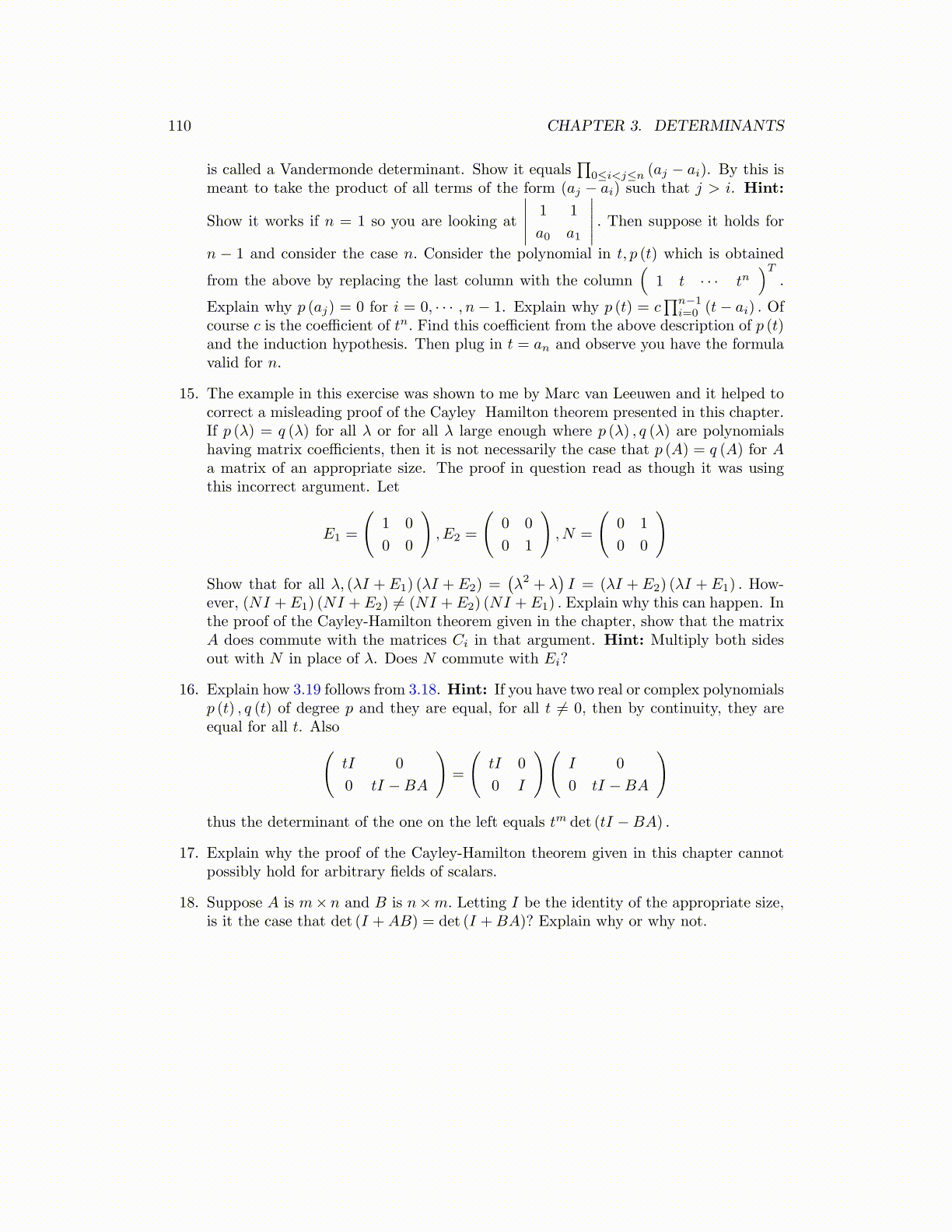
110 CHAPTER 3. DETERMINANTS
is called a Vandermonde determinant. Show it equals∏
0≤i<j≤n (aj − ai). By this ismeant to take the product of all terms of the form (aj − ai) such that j > i. Hint:
Show it works if n = 1 so you are looking at
∣∣∣∣∣ 1 1
a0 a1
∣∣∣∣∣ . Then suppose it holds for
n − 1 and consider the case n. Consider the polynomial in t, p (t) which is obtained
from the above by replacing the last column with the column(
1 t · · · tn)T
.
Explain why p (aj) = 0 for i = 0, · · · , n − 1. Explain why p (t) = c∏n−1
i=0 (t− ai) . Ofcourse c is the coefficient of tn. Find this coefficient from the above description of p (t)and the induction hypothesis. Then plug in t = an and observe you have the formulavalid for n.
15. The example in this exercise was shown to me by Marc van Leeuwen and it helped tocorrect a misleading proof of the Cayley Hamilton theorem presented in this chapter.If p (λ) = q (λ) for all λ or for all λ large enough where p (λ) , q (λ) are polynomialshaving matrix coefficients, then it is not necessarily the case that p (A) = q (A) for Aa matrix of an appropriate size. The proof in question read as though it was usingthis incorrect argument. Let
E1 =
(1 0
0 0
), E2 =
(0 0
0 1
), N =
(0 1
0 0
)
Show that for all λ, (λI + E1) (λI + E2) =(λ2 + λ
)I = (λI + E2) (λI + E1) . How-
ever, (NI + E1) (NI + E2) ̸= (NI + E2) (NI + E1) . Explain why this can happen. Inthe proof of the Cayley-Hamilton theorem given in the chapter, show that the matrixA does commute with the matrices Ci in that argument. Hint: Multiply both sidesout with N in place of λ. Does N commute with Ei?
16. Explain how 3.19 follows from 3.18. Hint: If you have two real or complex polynomialsp (t) , q (t) of degree p and they are equal, for all t ̸= 0, then by continuity, they areequal for all t. Also(
tI 0
0 tI −BA
)=
(tI 0
0 I
)(I 0
0 tI −BA
)
thus the determinant of the one on the left equals tm det (tI −BA) .
17. Explain why the proof of the Cayley-Hamilton theorem given in this chapter cannotpossibly hold for arbitrary fields of scalars.
18. Suppose A is m× n and B is n×m. Letting I be the identity of the appropriate size,is it the case that det (I +AB) = det (I +BA)? Explain why or why not.